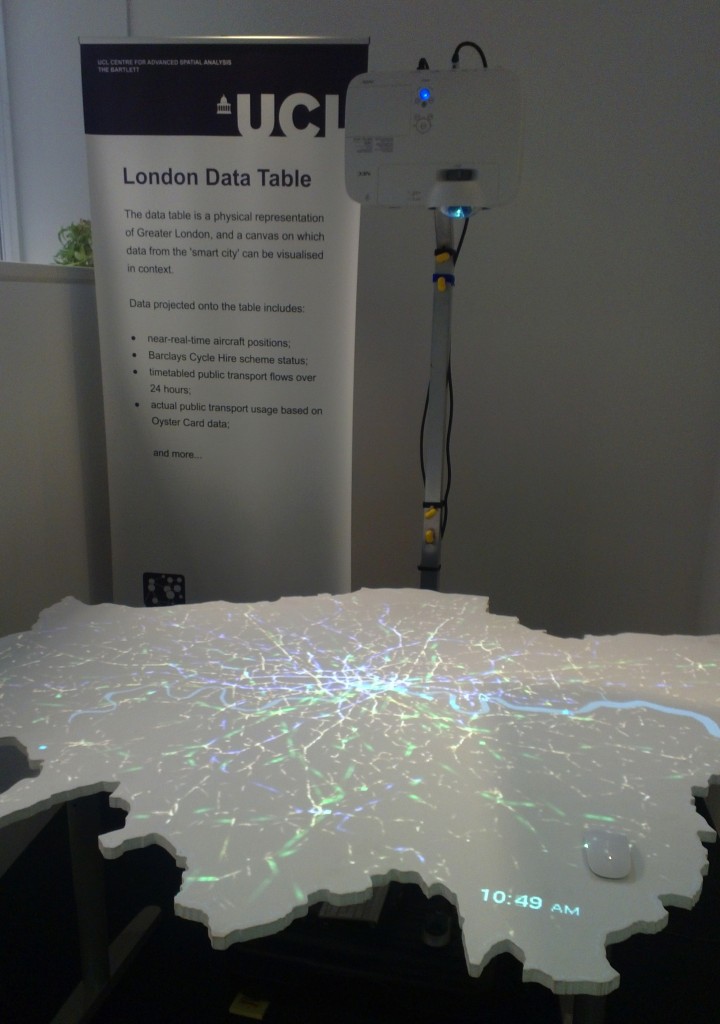The UCL runs a research lab called the Centre for Advanced Spatial Analysis (CASA). I met with Dr Andy Hudson Smith who is the director for the centre. Among other things the group is responsible for the fascinating London Dashboard.
It takes existing data feeds (such as tube times, busses and weather) and amalgamates them into one web page. The programming for the board took one person about six weeks. On top of the dash board is an open API which allows other people to take the data and use it for other purposes. For example, someone else in the team took the feed, mixed in Google Earth, threw in a projector and a Kinect camera to produce errr….a pigeon’s eye flyover of London showing live sensor data in the relevant places. It looks like this:
UPDATE: a video of the project has just been posted:
The idea is that you assume the identity of a pigeon (via the Kinect camera) and soar over London. It’s an oddly compelling way of showing data that gets away from the usual eye-candy visualisations. This may sound odd but this is the sort of creative chaos that you want to encourage, where both the ‘official’ uses of the data and the unexpected uses are equally as easy to create.
At the end of the day the success of the Sensing City concept will be measured by the involvement of multinationals, and the involvement of small two person startups that devise applications the larger organisations would not create. In other words, a foundation for innovation.
In the same vein the group also developed the London Data Table (shown below), using a projector to show feeds on a table cut to form the shape of the city. It’s another clever way of showing data without needing a degree in graphic design to show meaning across large data sets.
The research group is a multidisciplinary group that combines visualisation, programming and analysis.
Andy was enthusiastic about involving smaller organisations in the concept for the Sensing City as it would create more innovation. To illustrate he mentioned the Egg project on Kickstarter – essentially it’s an air quality sensor that anyone can buy, deploy and have the data uploaded.
The conversation was fascinating, and Andy mentioned that one thing that really interests him is the potential to have some sort of predictive warning ability via sensors. To elaborate, a series of events in one area could be an indicator of something about to happen in another area.
As to the potential for the Sensing City, Andy said that “everyone is interested in using the city as a lab – the opportunities are immense.” To add, he also thought that if Christchurch could turn the idea into reality, it would be a “unique chance to harvest the world’s best minds on this.”

